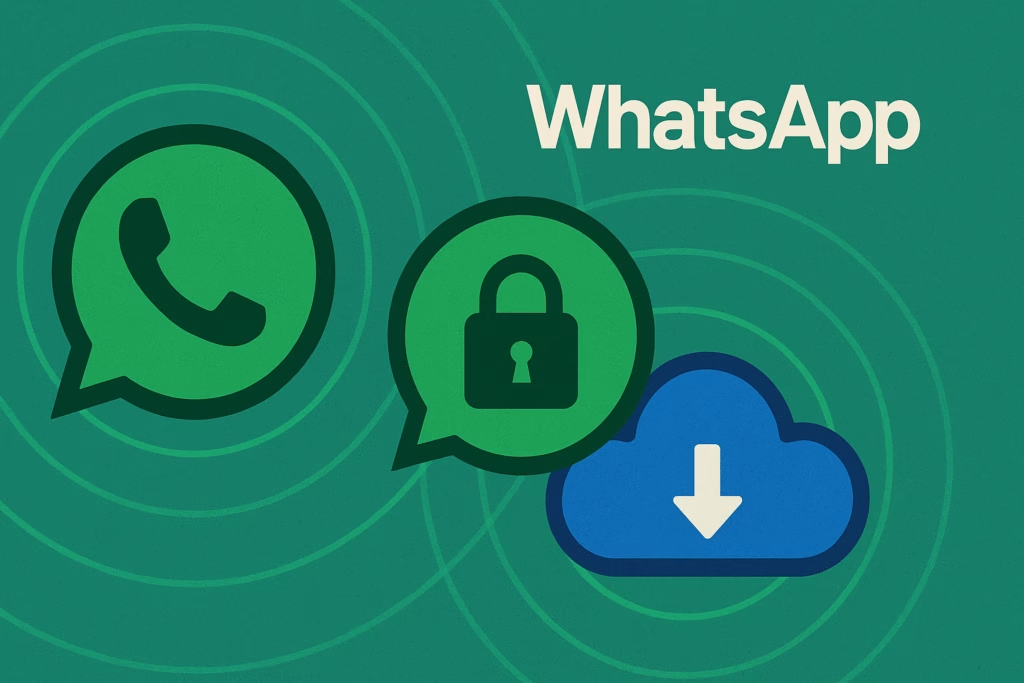
Financial institutions face an unprecedented wave of sophisticated phishing attacks, with cybercriminals increasingly targeting banks and credit card companies to steal sensitive customer data. According to the FBI’s Internet Crime Complaint Center, financial phishing scams resulted in over $4.2 billion in losses in 2022 alone, representing a 35% increase from the previous year.
Chase Bank, Wells Fargo, Bank of America, and other major financial institutions see their brands exploited daily in fraudulent emails, text messages, and websites designed to harvest login credentials, Social Security numbers, and credit card information. Understanding how these attacks work and implementing robust protection measures has become critical for both financial institutions and their customers.
The Rising Threat of Financial Services Phishing
Financial services phishing represents one of the most lucrative attack vectors for cybercriminals. Unlike other industries, banks and credit card companies handle direct access to funds, making them prime targets for sophisticated social engineering campaigns.
Why Financial Institutions Are Prime Targets
Several factors make banks and credit card companies particularly attractive to phishing attackers:
- High-value data: Banking credentials provide direct access to funds and sensitive financial information
- Customer trust: People are conditioned to respond quickly to urgent financial communications
- Regulatory compliance: Banks must maintain customer communication, creating legitimate touchpoints that criminals exploit
- Wide customer base: Major banks serve millions of customers, increasing the potential victim pool
Current Attack Statistics
Recent data from the Federal Trade Commission reveals alarming trends in financial phishing:
- Chase phishing attempts increased by 127% in 2023
- Credit card phishing scams account for 23% of all reported identity theft cases
- Bank phishing emails achieve a 4.7% click-through rate, significantly higher than other industries
- Average financial loss per successful phishing attack: $1,800
Common Chase Phishing Tactics
Chase Bank, being the largest bank in the United States, faces constant brand impersonation attempts. Cybercriminals have developed increasingly sophisticated methods to mimic Chase’s legitimate communications.
Fake Account Security Alerts
The most prevalent Chase phishing tactic involves fraudulent security notifications. These emails typically claim:
- Suspicious activity detected on the account
- Temporary account suspension for security reasons
- Required immediate verification to prevent account closure
- New security measures requiring credential updates
These messages create urgency while providing seemingly legitimate links that redirect to fake Chase login pages designed to capture usernames, passwords, and security codes.
Mobile Banking App Impersonation
With mobile banking usage exceeding 80% among Chase customers, criminals have shifted focus to SMS-based phishing attacks. Fake text messages often include:
- Shortened URLs leading to malicious mobile sites
- Requests to download “updated” banking apps containing malware
- Two-factor authentication bypass attempts
- Fake fraud alerts requesting immediate action
Bank Phishing Attack Vectors
Modern bank phishing campaigns utilize multiple attack vectors simultaneously, creating comprehensive threats that target customers across various touchpoints.
Email-Based Attacks
Traditional email phishing remains highly effective against banking customers. Sophisticated attacks now include:
- Domain spoofing: Using domains like “chase-security.com” or “wellsfargo-alert.net”
- Visual mimicry: Perfect replication of bank logos, colors, and formatting
- Personalization: Including partial account numbers or customer names obtained from data breaches
- Multi-step verification: Creating elaborate login processes to capture multiple authentication factors
Voice Phishing (Vishing)
Telephone-based attacks targeting bank customers have become increasingly sophisticated. According to FTC consumer reports, vishing attacks against bank customers include:
- Automated calls claiming fraudulent charges on accounts
- Live agents impersonating bank fraud departments
- Requests for phone-based account verification
- Social engineering to obtain security questions and answers
Smishing (SMS Phishing)
Text message-based phishing attacks exploit the immediacy and personal nature of SMS communications. Common bank smishing tactics include:
- Fake fraud alerts with callback numbers
- Account suspension notifications
- Promotional offers requiring immediate action
- Two-factor authentication spoofing
Credit Card Phishing Schemes
Credit card phishing attacks target both cardholders and financial institutions issuing credit cards. These attacks often prove more successful due to the widespread use of credit cards and customer familiarity with routine communications.
Fake Fraud Alerts
The most effective credit card phishing scheme involves fraudulent fraud alerts. These communications typically:
- Reference specific (often guessed) transaction amounts
- Create urgency by suggesting immediate account compromise
- Request verification through phone calls or website logins
- Capture full credit card details including CVV codes
Reward Program Exploitation
Credit card reward programs provide another attack vector. Criminals send fake communications about:
- Expiring reward points requiring immediate redemption
- Special bonus offers for account verification
- Program updates requiring credential confirmation
- Fake customer surveys offering reward incentives
Application and Pre-approval Scams
Phishing attacks also target potential customers through fake credit card offers. These schemes involve:
- Fraudulent pre-approval notifications
- Fake application websites collecting personal information
- Identity theft through application processes
- Social Security number harvesting
Advanced Detection Techniques
Financial institutions must implement sophisticated detection mechanisms to identify and prevent phishing attacks before they reach customers.
Email Authentication Protocols
Modern email security requires multiple authentication layers:
- SPF (Sender Policy Framework): Validates sending server authorization
- DKIM (DomainKeys Identified Mail): Provides cryptographic authentication
- DMARC (Domain-based Message Authentication): Enables policy enforcement and reporting
- Brand Indicators for Message Identification (BIMI): Displays verified logos in email clients
AI-Powered Threat Detection
Machine learning algorithms can identify phishing attempts through:
- Natural language processing to detect social engineering patterns
- Image recognition for brand impersonation detection
- Behavioral analysis of sender patterns
- Real-time URL reputation checking
Customer Education and Awareness
Successful phishing protection requires comprehensive customer education programs that address evolving threat landscapes.
Key Education Points
Financial institutions should educate customers about:
- Legitimate communication channels and timing
- Information that banks will never request via email or phone
- How to verify suspicious communications
- Proper reporting procedures for suspected phishing
Regular Training Programs
Effective customer awareness programs include:
- Quarterly security newsletters with current threat information
- Interactive online training modules
- Simulated phishing tests to assess customer awareness
- Mobile app security notifications and tips
Incident Response and Recovery
When phishing attacks succeed, rapid response protocols minimize damage and restore customer confidence.
Immediate Response Steps
Financial institutions should implement standardized incident response procedures:
- Account isolation: Immediately freeze affected accounts
- Transaction review: Analyze recent account activity for unauthorized access
- Customer notification: Contact affected customers through verified channels
- Evidence collection: Preserve logs and communications for investigation
- Regulatory reporting: Notify appropriate agencies within required timeframes
Recovery and Remediation
Comprehensive recovery processes should include:
- Account restoration with enhanced security measures
- Credit monitoring services for affected customers
- Identity theft resolution assistance
- Updated security awareness training
Regulatory Compliance and Requirements
Financial institutions must navigate complex regulatory requirements while implementing phishing protection measures.
Key Regulatory Frameworks
Relevant regulations include:
- Gramm-Leach-Bliley Act (GLBA): Requires financial privacy and security safeguards
- Fair Credit Reporting Act (FCRA): Governs identity theft response procedures
- Payment Card Industry (PCI) DSS: Mandates credit card data protection standards
- Federal Financial Institutions Examination Council (FFIEC) guidance: Provides cybersecurity frameworks
Technology Solutions and Best Practices
Implementing comprehensive phishing protection requires combining multiple technological solutions with organizational best practices.
Multi-Layered Security Architecture
Effective protection systems include:
- Email security gateways with advanced threat protection
- DNS filtering to block malicious domains
- Endpoint detection and response (EDR) solutions
- Security information and event management (SIEM) platforms
Advanced phishing protection services like PhishDef provide specialized detection capabilities designed specifically for financial services organizations, offering real-time threat intelligence and automated response mechanisms tailored to banking environments.
Authentication Enhancements
Modern authentication methods reduce phishing success rates:
- Multi-factor authentication (MFA) with app-based tokens
- Biometric authentication for mobile banking
- Risk-based authentication analyzing user behavior
- Hardware security keys for high-risk transactions
Key Takeaways
Financial services phishing represents a critical threat requiring comprehensive protection strategies. Key points include:
- Chase phishing and other bank impersonation attacks continue increasing in sophistication and frequency
- Credit card phishing schemes exploit customer trust in routine communications
- Multi-layered technical controls must combine with customer education for effective protection
- Incident response procedures require immediate action and comprehensive recovery processes
- Regulatory compliance adds complexity but provides essential frameworks for protection
Financial institutions must prioritize phishing protection as a core business function, implementing advanced detection technologies while maintaining comprehensive customer education programs. The evolving threat landscape demands continuous adaptation and improvement of security measures.
Protect your financial institution and customers from sophisticated phishing attacks with PhishDef’s advanced threat detection and response platform. Our specialized financial services protection combines real-time threat intelligence with automated incident response, providing the comprehensive security your organization needs. Contact PhishDef today to learn how our solution can strengthen your defense against chase phishing, bank phishing, and credit card phishing attacks.


